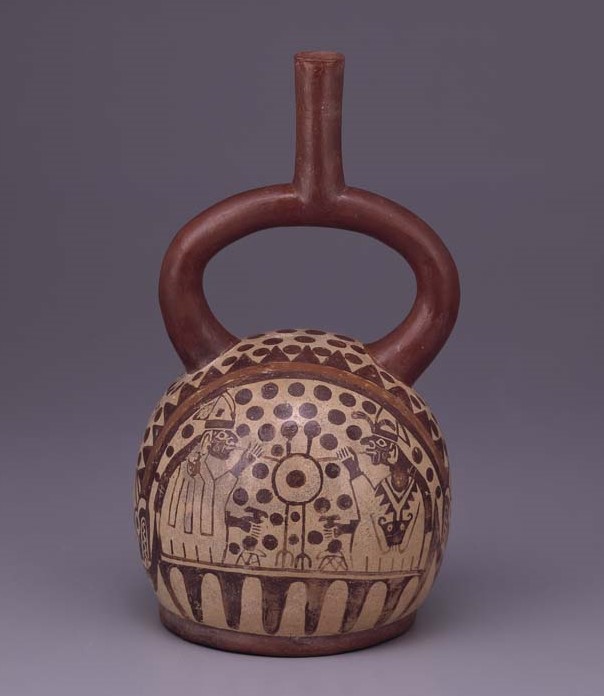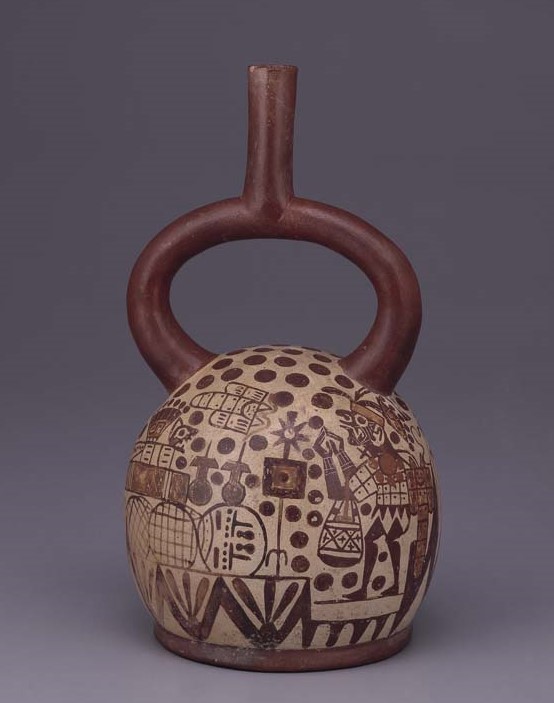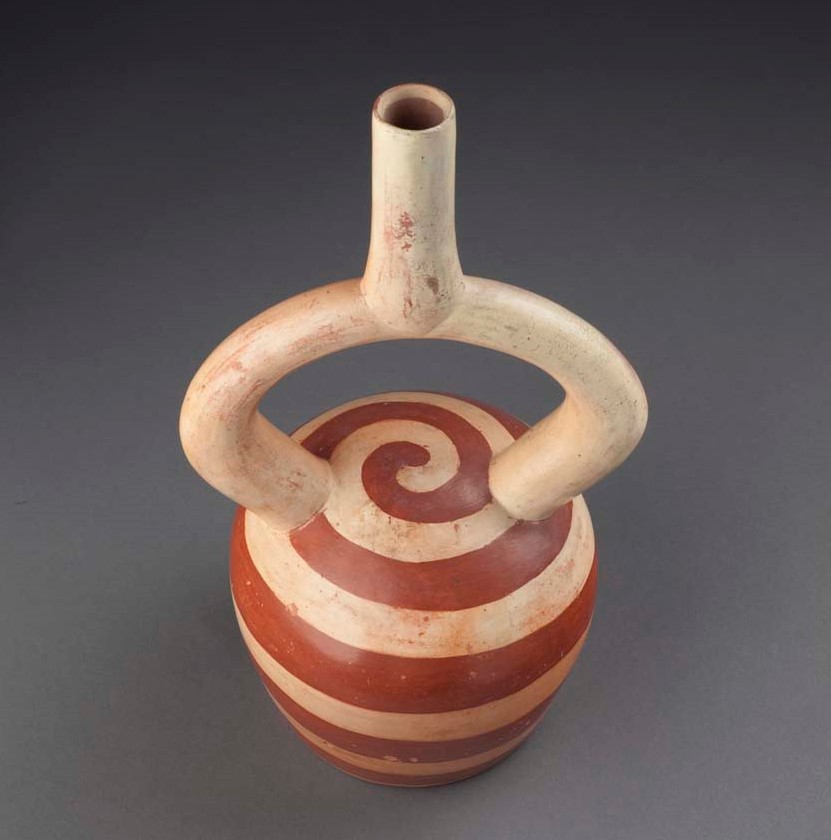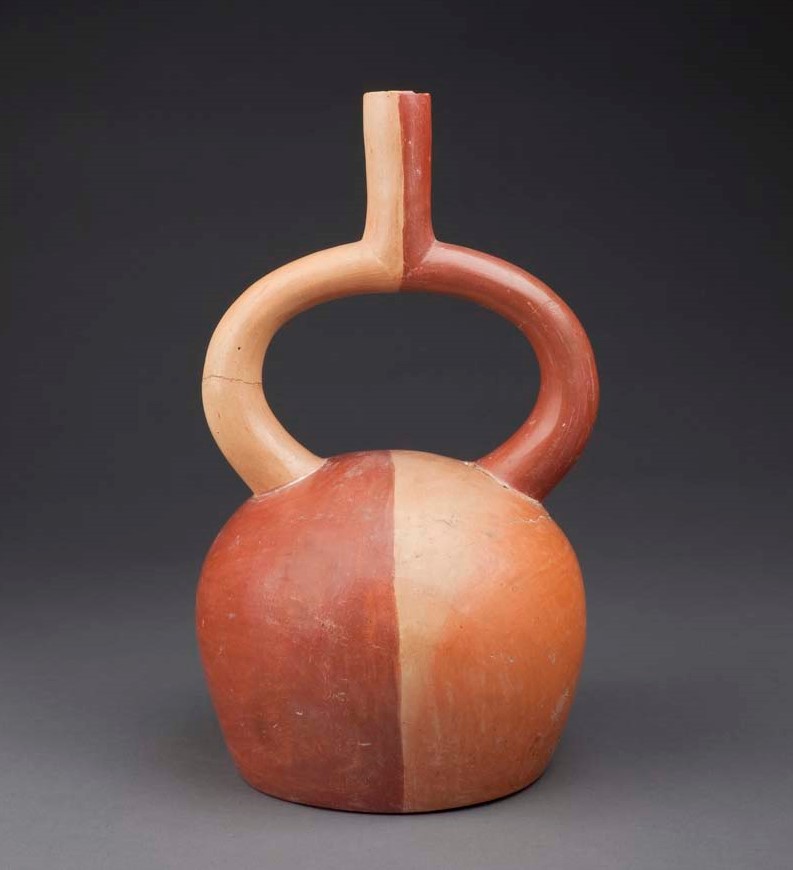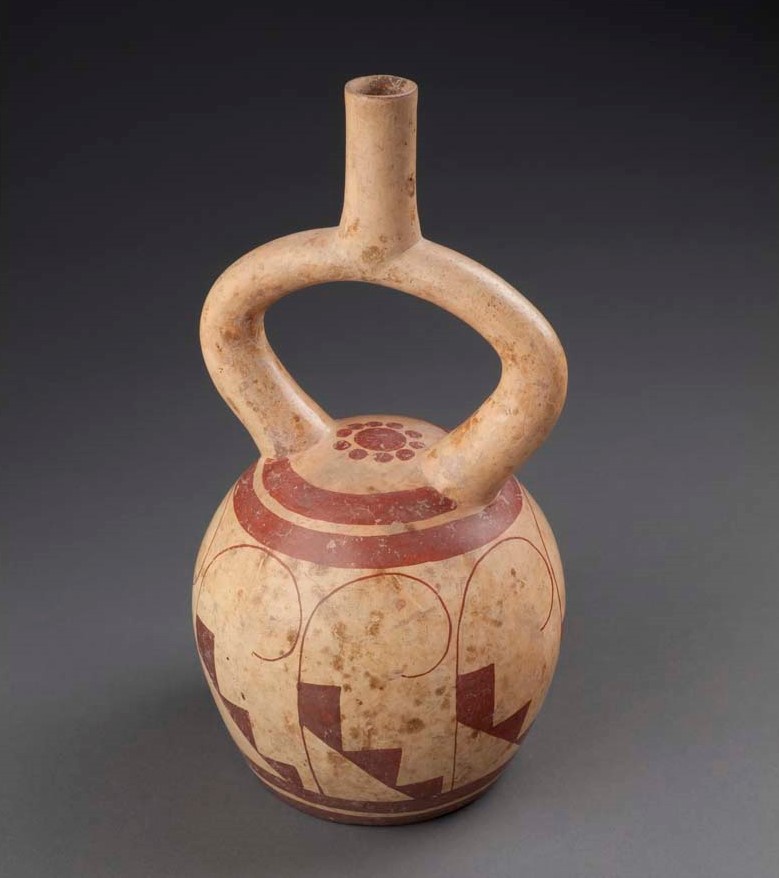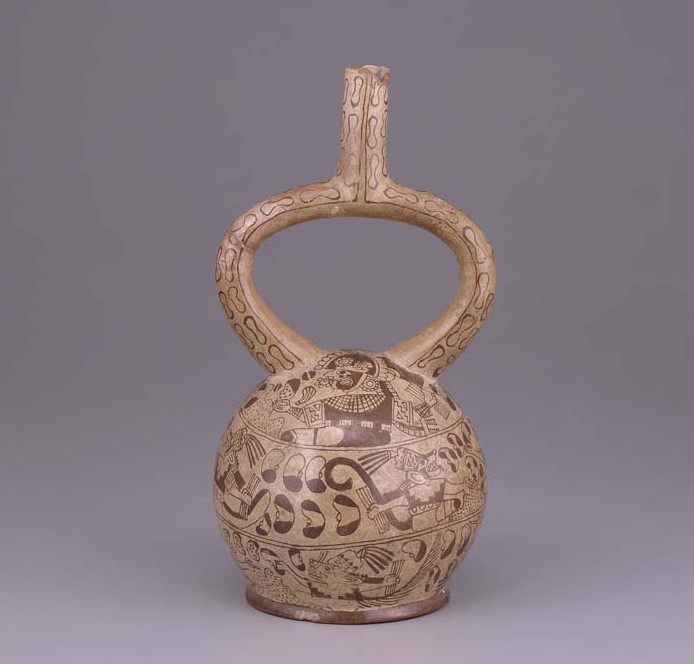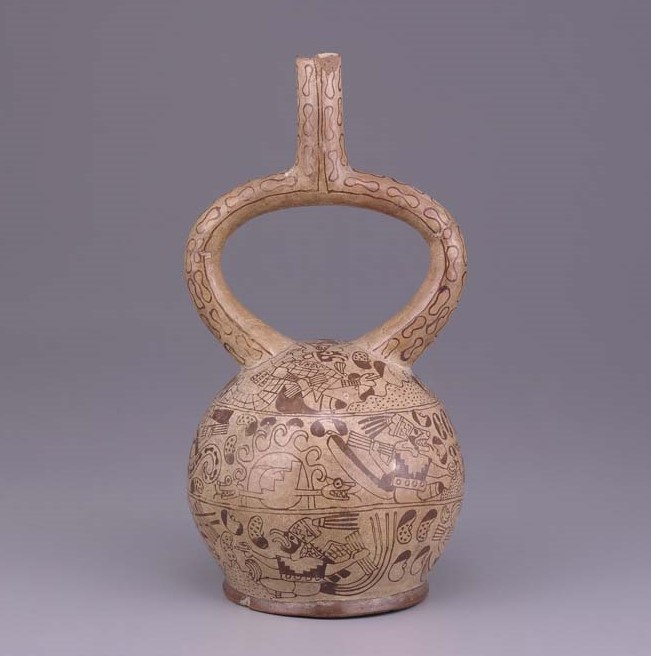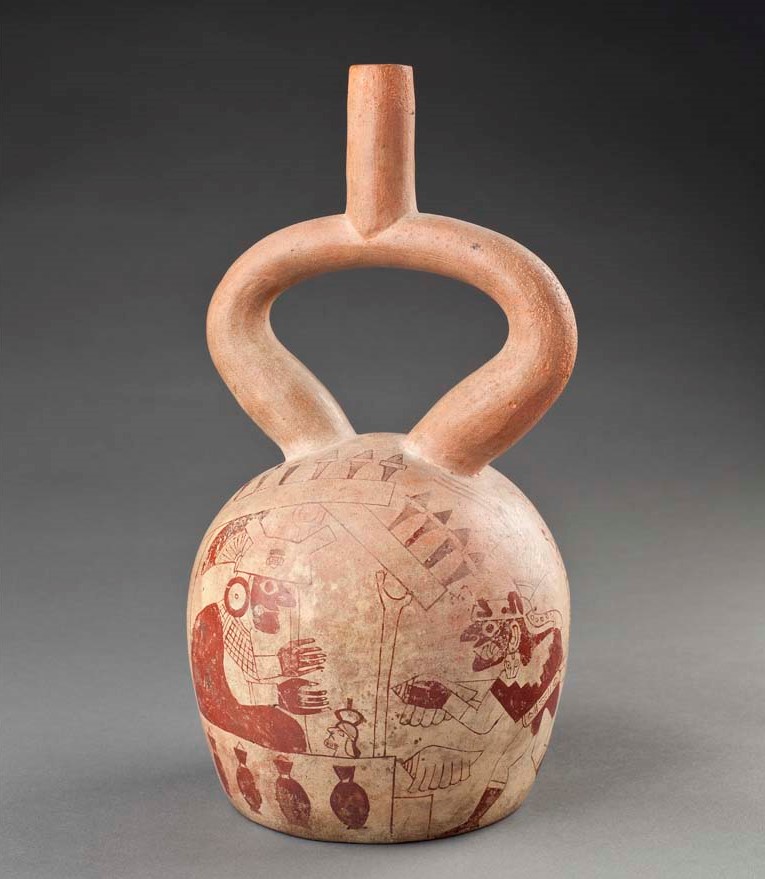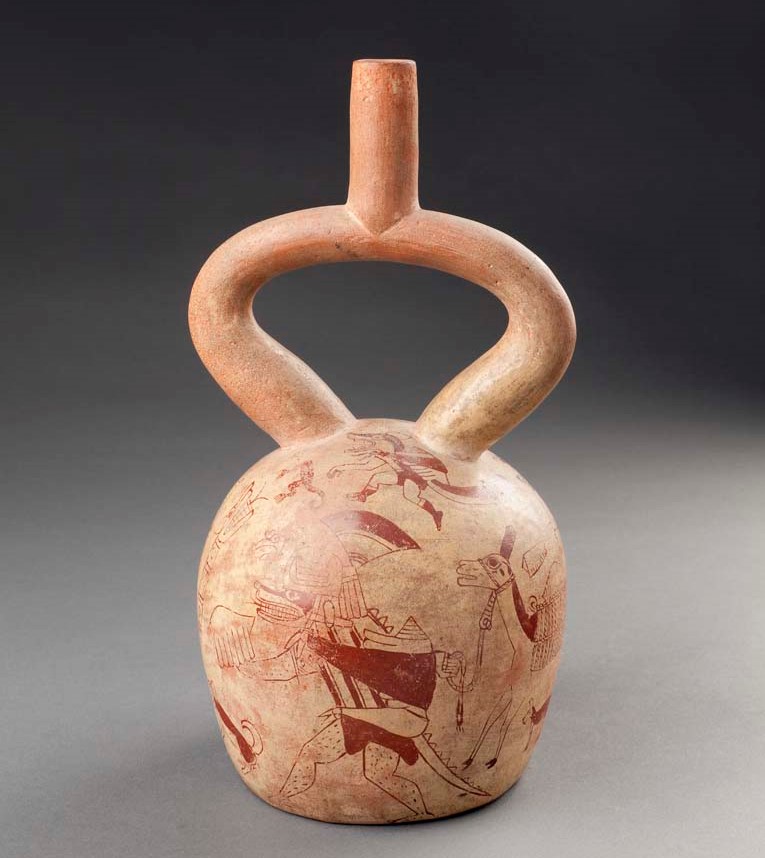Mochica Fine Line Pottery
Room 2, Vitrine 16
Ceramic bottles
Peruvian Northern Coast
Florescent Epoch (1 AD – 800 AD)
ML004112, ML010720, ML010816, ML010933, ML013623, ML013653.
Like all agricultural societies, ancient Peruvians were fundamentally concerned with the acquiring of knowledge regarding the cycles of nature. They knew that in nature there exist cycles, such as those marked by the returning of the seasons. They believed that in the same way we humans are born, live, die and pass on to the subterranean world, from where all life is reborn.
The world is animated by opposing forces which at the same time are also complementary. At the center of the Andean world view is the concept of DUALITY. In Quechua, the concept of complementary duality is known as TINKUY, and it is similar to the concept of YIN-YANG in eastern philosophy, which has its origin in the religion of ancient agricultural societies.
The cycles of nature are possible because the forces which animate the world are in constant movement. This dynamic is represented by the SPIRAL symbol.
The Andean world is divided into three planes, or worlds: the world above, or HANAN PACHA, which is inhabited by the gods, the earthly world, or KAY PACHA, where human beings and animals live, and the underworld, or UKU PACHA, where the dead dwell. These three planes are represented by the STEPPED symbol and the scroll in the upper part symbolizes the dynamic between these worlds.
In the earthly world human beings perform rituals to ensure that the forces of the world above and those of the underworld will meet. The Mochica embodied their principal religious concepts and myths in their pottery, and they also depicted their rituals in great detail using the technique known as “fine line”.
